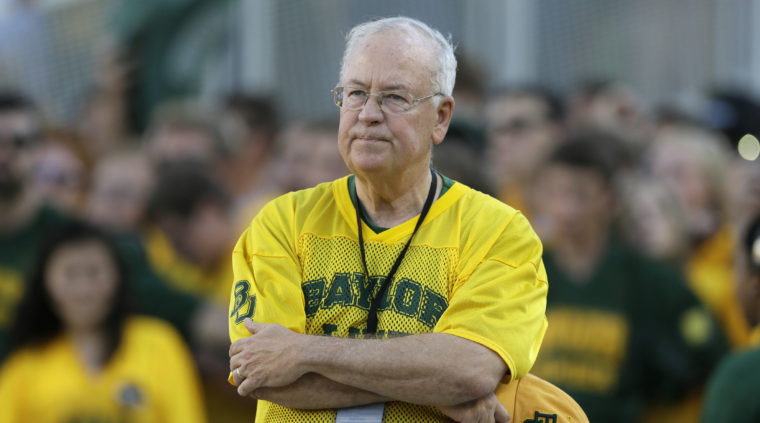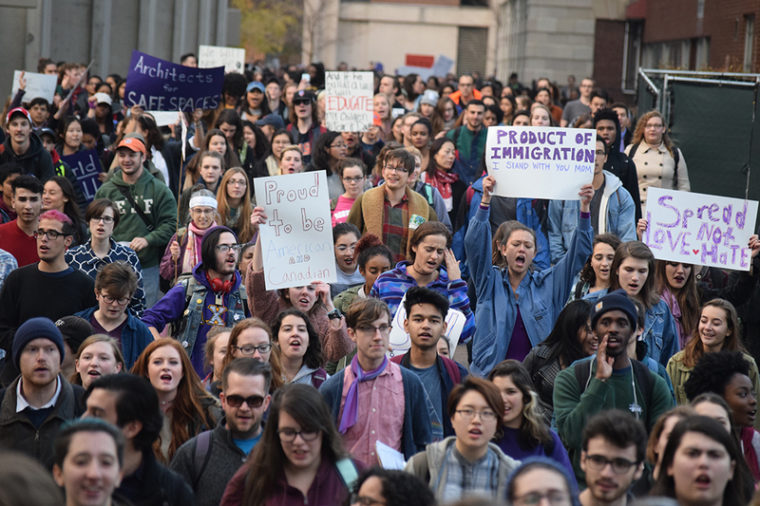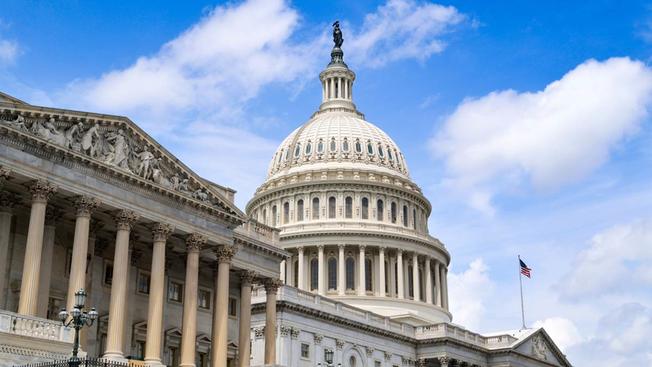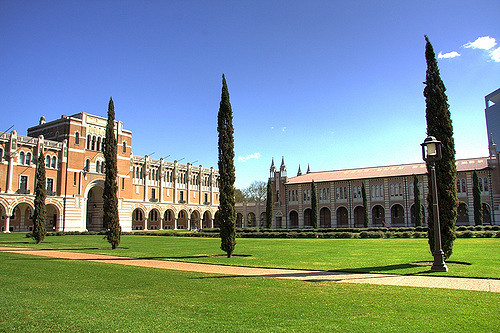As we move into another new year in 2018, I’ve begun my usual ritual of picking out books that I’d like to read during the course of the year. In today’s post, I want to share a few forthcoming books that are on my Higher Ed Reading List for 2018.

University of Nike: How Corporate Cash Bought American Higher Education
Joshua Hunt
In the world of college sports, winning means big dollars. But that money often comes at a cost. University of Nike explores the University of Oregon’s complex relationship with its corporate partner, Nike, and how the arrangement has undermined the school’s academic integrity, transparency, and campus culture. Through tenacious reporting and riveting storytelling, The University of Nike investigates a crisis moment in higher education.
Accreditation on the Edge: Challenging Quality Assurance in Higher Education
Susan D. Phillips and Kevin Kinser
Accreditation can be seen both as an invaluable resource and as a barrier to needed reform. Presenting an array of different perspectives―from accreditors and institutions to policymakers and consumers―the book offers nuanced views on accreditation’s importance to higher education and on the potential impact of proposed reforms. The contributors reveal that accreditation is currently on the edge of a policy precipice, as the needs of higher education and the interests of the many stakeholders may well outstrip its ability to perform. But, they argue, accreditation is also on the cutting edge of the transformation of higher education in the twenty-first century.
Making Sense of the College Curriculum: Faculty Stories of Change, Conflict, and Accommodation
Robert Zemsky, Gregory Wegner, and Ann Duffield
Readers of Making Sense of the College Curriculum expecting a traditional academic publication full of numeric and related data will likely be disappointed with this volume, which is based on stories rather than numbers. The contributors include over 185 faculty members from eleven colleges and universities, representing all sectors of higher education, who share personal, humorous, powerful, and poignant stories about their experiences in a life that is more a calling than a profession. Collectively, these accounts help to answer the question of why developing a coherent undergraduate curriculum is so vexing to colleges and universities. Their stories also belie the public’s and policymakers’ belief that faculty members care more about their scholarship and research than their students and work far less than most people.
Demographics and the Demand for Higher Education
Nathan D. Grawe
In Demographics and the Demand for Higher Education, Nathan D. Grawe has developed the Higher Education Demand Index (HEDI), which relies on data from the 2002 Education Longitudinal Study (ELS) to estimate the probability of college-going using basic demographic variables. Analyzing demand forecasts by institution type and rank while disaggregating by demographic groups, Grawe provides separate forecasts for two-year colleges, elite institutions, and everything in between. The future demand for college attendance, he argues, depends critically on institution type. While many schools face painful contractions, for example, demand for elite schools is expected to grow by more than 15 percent in future years.
Violated: Exposing Rape at Baylor University and College Football’s Sexual Assault Crisis
Paula Lavigne and Mark Schlabach
Paula Lavigne and Mark Schlabach weave together the complex – and at times contradictory – narrative of how a university and football program ascending in national prominence came crashing down amidst the stories of woman after woman coming forward describing their assaults, and a university system they found indifferent to their pain.
Envisioning Public Scholarship for Our Time: Models for Higher Education Researchers
Adrianna Kezar, Yianna Drivalas, and Joseph Kitchen
This book proposes a new paradigm of public scholarship for our time, one that shifts from the notion of the public intellectual to the model of the engaged scholar. The editors’ premise is that the work of public scholarship should be driven by a commitment to supporting a diverse democracy and promoting equity and social justice. The contributors to this volume present models that eschew the top-down framing of policy to advocate for practice that drives bottom-up change by arming the widest range of stakeholders — especially members of marginalized communities — with relevant research. They demonstrate how public scholarship in higher education can increase its impact on practice and policy and compellingly argue that public scholarship should be recognized as normative practice for all scholars and indeed integrated into the curriculum of graduate courses.
A People’s History of American Higher Education
Philo Hutcheson
Hutcheson introduces readers to both social and intellectual history, providing invaluable perspectives and methodologies for graduate students and faculty members alike. A People’s History of American Higher Educationsurveys the varied characteristics of the diverse populations constituting or striving for the middle class through educational attainment, providing a narrative that unites often divergent historical fields. The author engages readers in a powerful, revised understanding of what institutions and participants beyond the oft-cited “dead white men” have done for American higher education.
Higher Education Accountability
Robert Kelchen
In Higher Education Accountability, Robert Kelchen delivers the first comprehensive overview of how colleges in the United States came to face such overwhelming scrutiny. Beginning with the earliest efforts to regulate schools, Kelchen reveals the rationale behind accountability and outlines the historical development of how federal and state policies, accreditation practices, private-sector interests, and internal requirements have become so important to institutional success and survival.
Leading Colleges and Universities: Lessons from Higher Education Leaders
Stephen Joel Trachtenberg, Gerald Kauvar, and E. Gordan Gee
Today’s college and university leaders face complex problems that test their political acumen as well as their judgment, intellect, empathy, and ability to plan and improvise. How do they thoughtfully and creatively rise to the challenge? In Leading Colleges and Universities, editors Stephen Joel Trachtenberg, Gerald B. Kauvar, and E. Gordon Gee bring together a host of presidents and other leaders in higher education who describe how they dealt with the issues.
Media U: How the Need to Win Audiences Has Shaped Higher Education
John Marx and Mark Garrett Cooper
Media U shows how universities have appropriated new media technologies to convey their message about higher education, the aims of research, and campus life. The need to create an audience stamps each of the university’s steadily proliferating disciplines, shapes its structure, and determines its division of labor. Cooperand Marx examine how the research university has sought to inform publics and convince them of its value to American society, from the rise of football and Great Books programs in the early twentieth century through a midcentury communications complex linking big science, New Criticism, and design, from the co-option of 1960s student activist media through the early-twenty-first-century reception of MOOCs and the latest promises of technological disruption. The book considers the ways in which universities have used media platforms to reconcile national commitments to equal opportunity with corporate capitalism as well as the vexed relationship of democracy and hierarchy. By exploring how media engagement brought the American university into being and continues to shape academic labor, Media U presents essential questions and resources for reimagining the university and confronting its future.
Sold My Soul for a Student Loan: Higher Education and the Political Economy of the Future
Daniel T. Kirsch
With unprecedented student debt keeping an entire generation from realizing the “American Dream,” this book sounds a warning about how that debt may undermine both higher education―and our democracy. Examines both the causes of student debt and its implications for our democracy. Offers a 360-degree view of student debt from the perspective of students, graduates, policymakers, political activists, journalists, administrators, and college/university faculty. Provides a context for how student debt was created as a phenomenon much more complex than generational culture. Shows there is new hope in the form of a significant, multifaceted movement advocating for student debtors; and that government and banks are responding with new actions and programs.
The University We Need: Reforming American Higher Education
Warren Treadgold
Though many people know that American universities now offer an inadequate and incoherent education from a leftist viewpoint that excludes moderate and conservative ideas, few people understand how much this matters, how it happened, how bad it is, or what can be done about it. In The University We Need, Professor Warren Treadgold shows the crucial role of universities in American culture and politics, the causes of their decline in administrative bloat and inept academic hiring, the effects of the decline on teaching and research, and some possible ways of reversing the decline. He explains that one suggested reform, the abolition of tenure, would further increase the power of administrators, further decrease the quality of professors, and make universities even more doctrinaire and intolerant. Instead he proposes federal legislation to monitor the quality and honesty of professors and to limit spending on administration to no more than 20% of university budgets (Harvard now spends 40%). Finally, he offers a specific proposal for the founding of a new leading university that could seriously challenge the dominance of Harvard, Princeton, Yale, Stanford, and Berkeley and attract conservative and moderate faculty and students now isolated in universities and colleges that are either leftist or mediocre. While agreeing with conservative critics that universities are in severe crisis, Treadgold believes that the universities’ problems largely transcend ideology and have grown worse partly because disputants on both sides of the academic debate have misunderstood the methods and goals of higher education.





